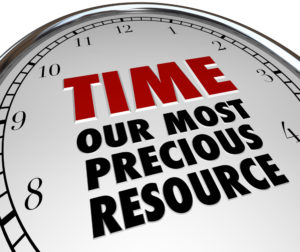Think of Email as a Letter You Would Mail
Email is Not a Conversation Tool
A single email is a stand-alone package of information; in this regard, it’s no different than a letter you’d mail.
When your recipient opens the envelope to read your letter, he has no idea what’s inside or what it’s about.
For example, you would never mail a letter to someone that started like this:
- “Okay, let’s do it.”
- “I understand where you’re coming from, but I still think we need to check back further to ensure we’re legally clear.”
Huh? Of course you wouldn’t send an email like that; you’d be considerate enough to include the previous message you’re replying to… right? … or is it?
Are you going to make your unfortunate recipient scroll to the bottom of a long string of messages to figure out what the heck you’re talking about?
An email minimalist would always take the time to sum up a frame of reference for her reader. Even if you include the entire stream of emails for the reader’s reference, you should still give a brief explanation. Hence, the reader knows instantly what you’re talking about. For example:
Hey John, about the legalities we’ve been discussing about the Biltmore and Johnson company mergers, I agree with your comments that we should get another opinion from their corporate lawyers.
Just letting you know I’ll follow up on this.
Nancy
All Emails are Opened Without Reference and Context
Just like a letter arriving in the mail, the reader needs some reference to know what the content is about.
It’s a simple matter to always frame your email correspondence so the reader can easily understand what your email is talking about.
Are You a cc’er?
Being cc’d on an email and not knowing why is one of the most common complaints of email misuse.
Some people love to use the cc option to keep everyone informed ad nauseam.
Here’s the thing. If you cc someone, you’re encroaching on their time and space. Common courtesy suggests you need to tell the recipient why. What do you expect them to do with the message?
Since you always put action items at the bottom of your messages when you email someone, using the cc button means you must inform everyone who receives your email exactly what you expect them to do.
For example;
From: Bill Bowler
To: Nancy Skinner
cc: Jane Jones, Charlie Parker
Hey Nancy, I just wanted to confirm our agreement that you’ll host next month’s (June 2024) sales presentation to our company reps.
Jane: Please note in our minutes that Nancy will be presenting in June.
Charlie: Can you give Nancy your notes from the presentation you gave last quarter?
Thanks, Bill
Using the Reply-to-All Option
As an email minimalist, you know better.
In effect, Reply-to-All should be treated exactly like a cc email.
If you’re going to Reply-to-All, then you need to take the time to let everyone know why they’re receiving your email.
In short, no email should ever be sent without every recipient knowing specifically why she’s receiving it and precisely what she’s supposed to do with it.
Using the bcc Option
Ask yourself this question: Why are you Bcc’ing someone?
Either you want that person to take some action, or you want to cover your butt for some future perceived problem.
If you want the bcc’d person to take action, you’ve just committed one of the original email sins: You sent someone an email without giving them a reason why.
If you’re bcc’ing because you want someone to know (your boss, perhaps) that you’re on top of things, you’re being annoying and not informative.
No one should ever receive an email from you without them knowing why.
Ultimately, there’s seldom a good reason to bcc anyone.
Are You Going Somewhere? Then Do Your World a Favor and Say So!
We all go away for extended periods at one time or another, and when you do, it’s wise to let others know.
All email platforms allow you to set an “away-from-your-desk” message.
When someone sends you an email, they’ll get an automatic reply that you’re away from your desk.
If you’re going away for a few days – and keeping up with the normal flow of email is not in the cards – then you need to set up a message that says you’ll be away and for how long.
What you don’t want your message to say is that “you’ll respond to your emails” when you get back.
That’s setting yourself up for a colossal headache. You don’t want to return from vacation and face a thousand unanswered emails.
Your “Away” Message Should Read Something Like This:
Karen will be away from her desk and unable to read or respond to emails. If this is important, please resend your message after September 23rd when she returns.
Is this going to be inconvenient for people? Who cares?
You can’t subject yourself to returning to a thousand waiting emails. If their message is important, they can make a point of resending it when you return. If they can’t be bothered, that works best for both of you.
Suppose you’re returning on the 23rd. In that case, you might want to give yourself an extra day’s cushion and say you’ll return to your desk on the 24th. That way, you can catch up and cover any emergencies that may have popped up while you were away.
Creating Your Signature
People often use several signature files depending on the information they wish to relay.
Your signature file usually includes your phone number(s) and mailing address. You may also want to add a message that lets people know what to expect in reply.
Just like you did for your vacation message – you told people that you wouldn’t be responding to any emails sent while you were away – you may want to inform people how you usually respond to emails when you are at your desk.
For example, your signature may look like this:
- Bob Smith
- Phone: 456-421-9455
- Cell: 467-609-5043
- 2345 West Mill Avenue, NY, NY, 234 395
Note: I check my email once daily. If you need me to do something urgently, please call my cell number.
This warning lets people know you will not reply quickly when they email you. It also says that you’re there for them if it’s essential. It’s courteous, informative, and, best of all, liberating.
Note: I check my email once daily. If you need me to do something urgently, please call my cell number.
This is a perfectly acceptable tag in your signature line and a perfectly acceptable way to run your life.
It states you’re there for a real emergency, and if it’s not, why would you ever consider disrupting your day for some non-urgent need?
If you put this into practice (only check email once or twice a day), you’ll soon notice a lot less email landing in your inbox.
You’ll also notice that what’s labelled “high priority” in an email is seldom urgent. If the sender has to pick up the phone, they’ll seriously consider the matter before calling.
So here’s the deal: If it’s not important enough for them to call, then it’s not important enough for you to disrupt your day by tending to one “urgent” message after another.
Mastering Email… to Reduce Stress and Maximize Your Health and Productivity (15 Part Series)
- Understanding the Irresistible Call of Email
- Email: “What Hath God Wrought?”
- Email: Since We Can’t Live WITHOUT it, Let’s Learn to Live WITH IT
- Understanding Email Stress – It’s All a Matter of Perspective
- The High Cost of “Free” Email
- How to Manage Email So That It’s NOT Managing You
- How to Empty an Over-flowing Email In-box
- You’ve Achieved an Empty In-box… Now What?
- It’s NOT Just the Emails You Send … Equally Important are the Ones You Don’t Send!
- How to Become an Email Minimalist
- Living the Life of an Email Minimalist
- Writing the Message: The Body of Your Email
- The Bits and Pieces of Effective Email
- D’oh! I Can’t Believe I Sent That Email!
- How Quickly Should I Respond to Email?






